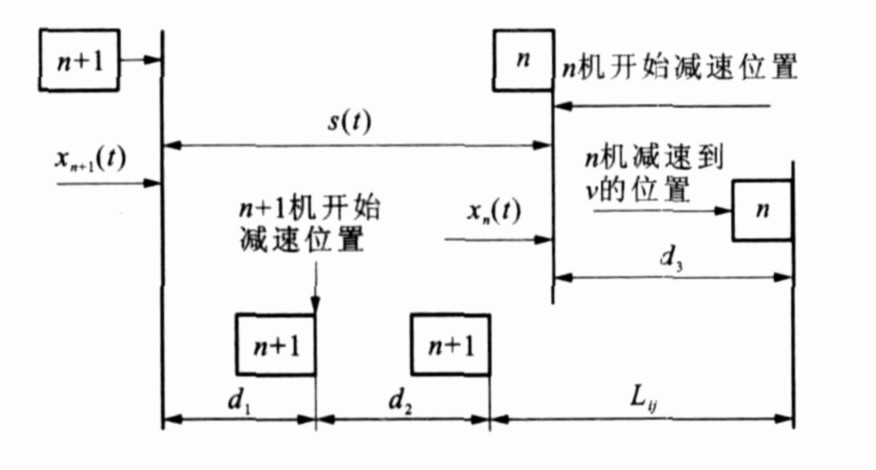Computational method of longitudinal safety separation based on flight following theory
Article Text (Baidu Translation)
-
摘要: 为了精确计算飞机飞行的纵向安全间隔, 分析了纵向间隔的影响因素, 利用管制员和飞行员的反应时间统一度量人为因素对纵向安全间隔的影响, 根据反应时间建立了飞机飞行跟驰模型。通过量化反应时间对纵向安全间隔的影响, 提出了考虑反应时间的安全间隔计算方法。仿真计算结果表明: 在航路飞行阶段, 相近飞机的纵向间隔小于3·0km为纵向危险接近, 为了保证跟驰飞行安全, 纵向间隔最小应为3·6km。可见模型和方法是可行的, 能够为飞行间隔标准的制定提供理论依据。Abstract: In order to accurately compute longitudinal safety separation between airplanes, the effect factors of the separation were analyzed, the effect degrees of human factors on the separation were measured according to the reaction times of controllers and pilots, a flight following model was built according to the times, the influences of the times on the separation were quantitated, and a computational method of the separation was put forward. Simulation result indicates that in flight period, the adjacency is dangerous when the separation is less than 3.0 km, whenas, the minimum computation separation is 3.6 km for flight safety, so the model and method are feasible, and are important theories to constitute flight separation standards.
-
Key words:
- air traffic safety /
- safety separation /
- following theory /
- reaction time /
- stability
-
[1] 周伟, 王秉纲. 路段通行能力的理论探讨[J]. 交通运输工程学报, 2001, 1(2): 92-98. https://www.cnki.com.cn/Article/CJFDTOTAL-JYGC200102021.htmZhou Wei, Wang Bing-gang. Theoretical study about road selection capacity[J]. Journal of Traffic and Transportation Engineering, 2001, 1(2): 92-98. (in Chinese) https://www.cnki.com.cn/Article/CJFDTOTAL-JYGC200102021.htm [2] Filkins L D, Little J W. Study of aircraft separation criteria[R]. Michigan: University of Michigan, 1964. [3] 王晓原, 隽志才, 贾洪飞, 等. 基于安全间距的车辆跟驰模型研究综述[J]. 长安大学学报: 自然科学版, 2004, 24(6): 51-54. https://www.cnki.com.cn/Article/CJFDTOTAL-XAGL200406013.htmWang Xiao-yuan, Juan Zhi-cai, Jia Hong-fei, et al. Summarization of car-following models based on security distance[J]. Journal of Chang an University: Natural Science Edition, 2004, 24(6): 51-54. (in Chinese) https://www.cnki.com.cn/Article/CJFDTOTAL-XAGL200406013.htm [4] 应爱玲. 间隔标准对飞机间碰撞危险影响的研究[D]. 南京: 南京航空航天大学, 2001. [5] 王永泉, 陈花玲, 毛文雄. 基于跟驰理论的道路交通噪声预测模型研究[J]. 系统仿真学报, 2004, 16(11): 2413-2416. doi: 10.3969/j.issn.1004-731X.2004.11.012Wang Yong-quan, Chen Hua-ling, Mao Wen-xiong. Research on road traffic noise prediction model based on car-following theory[J]. Journal of System Simulation, 2004, 16(11): 2413-2416. (in Chinese) doi: 10.3969/j.issn.1004-731X.2004.11.012 [6] 王殿海. 交通流理论[M]. 北京: 人民交通出版社, 2002. [7] 杨佩昆, 李克平. 车距自控系统跟车模型稳定性理论分析[J]. 同济大学学报: 自然科学版, 2000, 28(6): 661-663. doi: 10.3321/j.issn:0253-374X.2000.06.007Yang Pei-kun, Li Ke-ping. Theoretic analysis on stability of car-following models appropriate to automatic safe headway control system[J]. Journal of Tongji University: Natural Science, 2000, 28(6): 661-663. (in Chinese) doi: 10.3321/j.issn:0253-374X.2000.06.007 [8] 金春霞, 王慧. 跟车模型及其稳定性分析综述[J]. 交通运输系统工程与信息, 2001, 1(3): 220-225. https://www.cnki.com.cn/Article/CJFDTOTAL-YSXT200103009.htmJin Chun-xia, Wang Hui. Car-following model andits stability analysis[J]. Journal of Communications and Transportation Systems Engineering and Information, 2001, 1(3): 220-225. (in Chinese) https://www.cnki.com.cn/Article/CJFDTOTAL-YSXT200103009.htm [9] Chow T S. Operational analysis of a traffic dynamics problem[J]. Operations Research, 1958, 6(6): 827-834. -





 下载:
下载:



